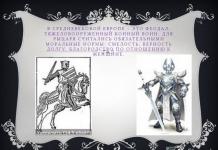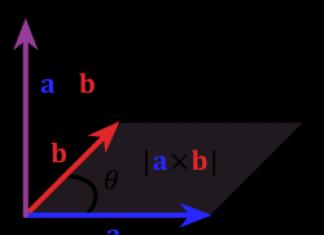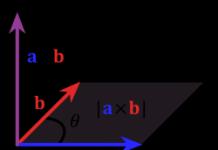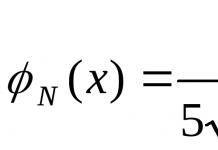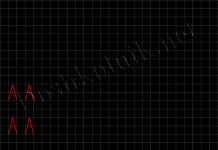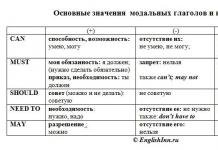Your kids have probably already mastered counting to ten. English language: 1. We have already watched the cartoon about Gogo “How old are you?”, where he learns to count from 1 to 10. 2. Songs – counting rhymes we sing and teach: Ten Little Indians, Once I caught a fish alive. Now, to consolidate the material, it's time to board games…
I think it’s simply impossible to study counting in English to ten with children and not learn this funny classic song for children “One, Two, Three, Four, Five – Once I caught a fish alive.” And although my students and I completed this topic a long time ago, very often at the end of the lesson, when we usually sing something, they...
A good addition to the cartoons about Muzzy are online games s. Today we present to you a wonderful selection of 13 online games based on the first series of the cartoon “Muzzy in Gondoland”. There are many tasks in the game about Muzzy and they are all quite varied. Press the green “Play” button, select British English as the learning language and English as the hint language and make sure...
At first, when mastering the English language, the need to know basic vocabulary and some elements of grammar comes to the fore.
And if you have not studied English before or have studied it for a very long time, it will always be useful to consider, which are the foundation without which further learning of the language is impossible.
correct pronunciation of numbers and composition of numbers
| Digit (Russian) | Number (English) | Transcription | Pronunciation |
| 1 - one | one | ||
| 2 - two | two | ||
| 3 - three | three | [θri:] | |
| 4 - four | four | ||
| 5 - five | five | ||
| 6 - six | six | ||
| 7 - seven | seven | [‘sev(è)n] | |
| 8 - eight | eight | ||
| 9 - nine | nine | ||
| 0 - zero | zero | [‘zierèu] |
Image:
IMPORTANT remember that this ten is the basis on which further material is built, so try to learn these 10 words.
| Number (Russian) | Number (English) | Transcription | Pronunciation |
| 10 – ten | ten | ||
| 11 – eleven | eleven | ||
| 12 – twelve | twelve |
Image:

These numbers have indigenous names and do not follow any rules.
The rest of the second ten is good because they have a general pattern.
The formula is: number (F) + suffix (-teen). In general, see for yourself:
|
Formula for the second ten: Digit (F) + suffix (-teen) |
|||
| Number (Russian) | Number (English) | Transcription | Pronunciation |
| 13 – thirteen | thir teen | [ˈθε:’ti:n] | |
| 14 – fourteen | four teen | [‘fo:’ti:n] | |
| 15 – fifteen | fif teen | ['fif'ti:n] | |
| 16 – sixteen | six teen | [‘siks’ti:n] | |
| 17 – seventeen | seven teen | [‘sevn’ti:n] | |
| 18 – eighteen | eigh teen | ||
| 19 – nineteen | nine teen | [‘nain’ti:n] | |
Image:

Some exceptions:
- The number 13 changes radically. Instead of threeteen - thirteen.
- The number 15 changes radically. Instead of fiveteen - fifteen.
- In the number 18, one “-t” is removed. Instead of eightteen - eighteen. The reason for this is the lack of long consonants in English.
The next link is the “tens”. They all have a common concept.
First comes the number (F), then the suffix “-ty” is added to it, resulting in a finished ten.
See for yourself:
|
Formula for tens: Digit(F) + suffix(-ty) |
|||
| Number (Russian) | Number (English) | Transcription | Pronunciation |
| 20 – twenty | twen ty | ['twenti] | |
| 30 – thirty | thir ty | [ˈθε:ti] | |
| 40 – forty | for ty | [‘fo:ti] | |
| 50 – fifty | fif ty | [‘fifti] | |
| 60 – sixty | six ty | [‘siksti] | |
| 70 – seventy | seven ty | [‘sevnti] | |
| 80 – eighty | eigh ty | [‘eiti] | |
| 90 – ninety | nine ty | [‘nainti] | |
Image:

Some exceptions:
- The number 20 changes radically. Instead of twoty - twenty.
- The number 40 changes radically. Instead of fourty - forty.
- The numbers 30, 50, 80 change radically in the same way as the second ten.
Some information for those who are going to use large numbers:
| Number (Russian) | Number (English) | Transcription | Pronunciation |
| 100 – one hundred Correct composition of numbers. Everything is the same as in other languages. Highest order first, then descending order Billions – millions – thousands – hundreds – tens – units 58 – fifty eight 463 – four hundred sixty three 1508 – one thousand five hundred eight Notes:
1980 – nineteen-eighty; 2015 – twenty-fifteen Learning basic elements such as or prime numbers will help us create a foundation on which to base our knowledge of the English language. There is no need to rush in this matter, because if you have a weak understanding of simple things, during the learning process you will still have to go back and fill in these gaps. A short lesson on the correct composition of numbers and.
|
Being able to count correctly and competently in English is no less important than learning to speak it. In almost any country in the world (especially in tourist areas), sellers, waiters, service personnel, and so on, one way or another, know how the numbers are in English. Are you somehow worse than them? To be able to count to a million fluently, it is enough to know only thirty-one words. And in order to know the English numbers from 1 to 100, for example, there should be no problems at all. After all, for comparison, in order to at least know numbers in Russian, you need to learn more than a hundred words. In fact, the rules for combining single-digit into two- and three-digit are the same. Only English is even simpler in this regard. Because numbers in English are subject to certain rules that seriously simplify the whole process:
- Here the numerals are not declined by gender. If in our Russian you can say “two thousand” and “two million”, then in this case it will be “two thousand” and “two million”.
- Also, numeral words do not change endings. For example, if we want to say one million, four million or ten million, in English it will be “million” in all cases.
- There is no separate name for hundreds (for example, as in Russian two hundred, three hundred, and so on). It's simple, two hundred, three hundred.
- In English, there are several times fewer exceptions in numerals than in Russian.
Counting from zero to one hundred thousand
Many people first try to memorize English numbers from 1 to 10. But in this case, it would be better to learn up to thirteen right away. The fact is that 11, 12 are exceptions and you need to know them.
It is best to learn English numbers with transcription and Russian pronunciation. Only there will it be possible to learn to speak as correctly as possible.
Counting to 10 in English:
Usually there are no problems with learning the first 10. Almost everyone knows how to say one, two, eight in English and nine in English. But eleven in English and twelve you just need to remember. Thirteen will also be an exception - thirteen. The main thing to remember is thirteen how to write correctly. After all, this number, although it obeys general rules, but still refers to exceptions.
Then it's easier. The numbers from 1 to 20 are simply repeated. But in the second ten, teen is added to the single digits. For example, atin is 18. And so you can take any number from 13 to 20. Sixteen, Seventeen.

The same principle applies to thousands. (thousand). Add the second part to the number in the form thousand (fauzend). For example, 32,000, in English it would be thirty-two thousand (fYoti tu fauzend).
It turns out that in order to count to one hundred thousand you need to learn the first 13 digits, as well as how to pronounce tens, hundreds and thousands. On average, this will take no more than half an hour.
Numerals in English
As in our Russian language, numerals come in two varieties, namely ordinal and quantitative. Ordinal ones are simply One, Two, Three, Four, Five and so on.

Quantitative ones are those that answer the question “what”. To form numerals, “th” is added to the usual ones at the end of the word. The only exceptions are the first, second and third. 
Ordinals
Ordinals must correspond to the question, “Which one is it?”. It’s worth mentioning the exceptions right away. In English, such simple numerals as first, second, third, and fifth are exceptions. The following table shows how they are written.

There is a single rule on the basis of which absolutely all numerals in English are formed. All of them are formed by the article “The”. Here the ending “th” must be added to all numerals.
There are two rules for numerals that you must remember when using them.
In compound numerals, such as twenty-one ( translated means 21) the "twenty" part remains unchanged, and "one" becomes the ordinal "first". In these cases there is no need to include an article.
In some numerals, such as twenty and thirty, the letter y goes into i. It is additionally added e. Only then add the above th.
If you learn and follow these two simple rules. Then you will know how numbers are written in English. With the right approach it will be easy to learn for children too.
When it is necessary to talk about the number of an exercise, the address of a house, a page in a book or a bus, we have the right to use not only ordinal numbers, but also cardinal ones.
When using ordinal numbers, the number must come before the noun. An article is added to a noun "the".
Simple fractions
Fractional numbers, unlike our usual Russian, are often denoted using a dot. For example, 17.99. English speakers use a comma to indicate large fractional digits. From right to left they separate three digits. For example, 74, 024, 199.
There are some rules for pronunciation and notation. When a number is written as 4.254, it is pronounced four point two five four. And if we have the number 0.63, then in the American version it sounds like zero point sixty three. In the UK the pronunciation is slightly different, so they say sixty threehundredths. In international circulation, the second variation is used more. Here is a table of simple fractions.

Decimals and fractions
As stated above, you need to remember that in decimals There is always a period, not a comma. To learn fractions, you need to add the fractional part to the whole part. The words point or decimal serve as a way of joining. You can see an example below.
If the integer part is zero, then it can be ignored. Remembering these simple rules You can very easily learn to count in this melodic language.
Watch the tutorial video
Subject English numbers quite complicated, since the formation of English numerals differs from the formation of Russian ones. There are rules, and there are exceptions, and both have their own peculiarities. Let's look at English numbers with transcription and Russian pronunciation, let's look at vivid examples and let's focus on exceptions. Go ahead for new knowledge!
Numbers in English are formed in different ways. Numerals from 1 to 10 have some rules of formation, from 13 to 20 - others. Tens, hundreds and thousands also have peculiarities of education.
Features of the formation of numerals from 1 to 12
The table below shows the numerals from 1 to 12 with transcription, Russian pronunciation and examples:
| 1 | one | one | |
| 2 | two | [ˈtuː] | that |
| 3 | three | [θriː] | sri |
| 4 | four | odds | |
| 5 | five | five | |
| 6 | six | syx | |
| 7 | seven | [ˈsevn] | s'even |
| 8 | eight | eith | |
| 9 | nine | nain | |
| 10 | ten | heating element | |
| 11 | eleven | [ɪˈlevn̩] | il'even |
| 12 | twelve | tU'elv |
- We wanted one cake, two bananas ang eight apples => We wanted one cake, two bananas and eight apples.
- We need to buy avocado fot this recipe. Or better two ones => For this recipe we have to buy an avocado. Or better yet, two.
- Three kilos of meat, four big tomatoes, five eggplants and garlic will make this evening much more better. I will prepare very delicious dish by my own recipe! => Three kilograms of meat, four large tomatoes, five eggplants and garlic will make the evening much better. I will prepare a very tasty dish according to my own recipe!
- Eleven foxes and twelve wolves were seen on this week at this place => Eleven foxes and twelve wolves were seen this week at this place.
Features of the formation of numerals from 13 to 20
| 13 | thirteen | [θɜː’tiːn] | sert'in |
| 14 | fourteen | [ˌfɔː’tiːn] | fort'in |
| 15 | fifteen | [ˌfɪf’tiːn] | fifty'in |
| 16 | sixteen | [ˌsɪk’stiːn] | sykst'in |
| 17 | seventeen | [ˌsev(ə)n’tiːn] | Seventh'in |
| 18 | eighteen | [ˌeɪ’tiːn] | eit'in |
| 19 | nineteen | [ˌnaɪn’tiːn] | night'in |
The table shows that numerals from 13 to 19 (inclusive) are written according to the same rules; a particle is added to the cardinal number (one, two, three) –teen. And do not confuse cardinal numbers with ordinal numbers! in English they are formed in a completely different way!
On a note! It must be remembered that every rule has exceptions. In this case, the exceptions will be the numerals 13 and 15. Their roots three and five will have a modified form:
- Three => thirteen
- Five => fifteen.
Not threeteen/fiveteen!!!
Some examples:
- Seventeen girls were seen at this party while only eight boys came. — Seventeen girls were seen at the party, while only eight guys came.
- Seventeen pieces of cake were given to all those children. — All these children were given seventeen pieces of pie.
- There is a lot of fish in this river. Nineteen kinds were known 5 years ago. — There are a lot of fish in this river. Five years ago, nineteen species were known.
Tens of English numerals
| 20 | twenty | [ˈtwenti] | tU'enti |
| 30 | thirty thirty | [ˈθɜːti] | S'yorti |
| 40 | forty | [ˈfɔːti] | f'orti |
| 50 | fifty | [ˈfɪfti] | f'ifti |
| 60 | sixty | [ˈsɪksti] | s’yksti |
| 70 | seventy | [ˈsevnti] | s'eventi |
| 80 | eighty | [ˈeɪti] | ‘hey |
| 90 | ninety | [ˈnaɪnti] | n'ainti |
The table clearly shows that tens of numbers are formed using a particle (suffix) –ty. These numerals are derivatives of cardinal ones, but you also need to add the suffix –ty.
Important! Remember that when forming the numbers 20,30, 40 and 50, the root of the cardinal digits, which serve as the basis for the formation of tens, will change:
- two – 20 twenty [ˈtwenti]
- three – 30 thirty [ˈθɜːti]
- four – 40 forty [ˈfɔːti]
- five – 50 fifty [ˈfɪfti]
And one more nuance: the number 80 [ˈeɪti] is characterized by the absence of repetition of the letter t: eight (eight) = eighty(eight+ty =eightty).
Examples:
- Thirty exotic animals were needed to make the idea of the movie complete => Thirty exotic animals were needed to make the idea of the movie complete.
- Sixty soldiers will come on parade in front of the palace=> Sixty soldiers will come to the parade in front of the palace.
- Fifty of them knew the road but only thirty agreed to follow us => Fifty of them knew the road, but only thirty agreed to follow us.
As for the stress of numerals that are formed with the help of –ty, then everything is simple - stress Always will be on the first syllable.
Reference: It happens that it is difficult for beginning students to divide colloquial speech numerals with –ty and –teen. And here stress comes to the rescue - if it is on the first syllable, then 100% we are dealing with tens of numerals.
Basics: How numbers are formed in English
When studying the formation of English numbers, it is important to remember that numbers from 1 to 12 are simple cardinal numbers. Their task is to indicate the number of objects. Such numerals consist of one word. It is very important to remember the spelling of the first twelve digits, since they are the basis for the formation of all other digits - from thirteen to a billion.
How to pronounce numerals that are formed by adding the particle –teen? Here you need to be very careful => the pronunciation of numerals (English numbers) will have two stresses: on the first and second syllable. At the same time, we immediately note that the stresses will not be equal in strength. One of them will be secondary, and the other will be primary.
For example, how do you pronounce thirteen? From the transcription of [ˌθɜːˈtiːn] it is clear that the word has two stresses. The bottom line indicates secondary stress, the top line indicates primary stress. The same goes for fourteen [ˌfɔːˈtiːn] and fifteen [ˌfɪfˈtiːn]. There are also two stresses here – main and additional.
What to do to avoid making mistakes with pronunciation? To do this, you should always look at the transcription. Each numeral, like any other word, should be studied according to the following scheme: transcription - translation - the presence of several meanings.
Note! In some dictionaries, the stress of numerals is determined by the presence (absence) of a noun after it. For example, if a numeral is next to a noun, then the stress falls on the first syllable =>
- fifteen rivers [ˈfɪftiːn ˈrɪvər z]
- sixteen cats [ˈsɪkstiːn ˈkæts]
But! If a numeral stands alone in a sentence, without a noun, then the stress falls on the second syllable (on the suffix –teen):
- fifteen
- sixteen
Examples:
- Fifteen cats were sold this week (emphasis is on the first syllable) => Fifteen cats were sold this week
- How many cats were sold this week? – Fifteen (emphasis on the suffix –teen) => How many cats were sold this week? - Fifteen.
A hundred, a thousand, a million: is there a difference?
First of all, it should be noted that before the numerals hundred (one hundred), thousand (thousand) and million (million) there will always be either the word one or indefinite article a (meaning ‘one’).
- a/one hundred => One h’andrid [ə wʌn ˈhʌndrəd]
- a/one thousand => One Southend
- one million => One m'ilyan.
- One hundred and twenty => one hundred and twenty
- One hundred singers => one hundred singers
- One hundred thirty eight cars => one hundred thirty eight cars.
But! Other cardinal numbers are characterized by the absence of an article! =>
- Five dresses => Five dresses.
- Eight balls => Eight balls.
Important! The numerals hundred, thousand and million do not have the ending –s, which determines the plural.
- Two hundred => two hundred
- Five hundred => five hundred
- Nine hundred => nine hundred, etc.
If we are talking about thousands, then the same rule applies:
- thousand (one thousand) – one thousand or a thousand
- five thousand – five thousand
- seven thousand – seven thousand.
Millions are formed by the same principle:
- million (one million) – one million or a million
- seven million – seven million
- nine million – nine million.
But! English wouldn't be as fun to learn if it didn't have exceptions. What would it be like without them? Students will be interested to know that the ending –s in millions, thousands and hundreds is still used. When does this happen? When measures denote an indefinite number of these same millions, thousands and hundreds.
Examples
- Hundreds of pages to read for understanding => Read hundreds of pages to understand (something, foreign language, For example).
- Five millions of tons of gold => Five million tons of gold.
- Thousands of kilometers to walk to win marathon => Walk thousands of kilometers to win the marathon.
From the examples it is clear that after hundreds, thousands and millions with the ending –s (when translated into English) comes a noun or verb. In most cases, the additional part of the sentence will still be a noun. And if it is present, it must be with the preposition of:
- Seven or eight thousand of specie were made of pure silver => Seven or eight thousand metal coins were made of pure silver.
A song about English numbers for children
Let's sum it up
Numbers in English are formed in a different way from the one we studied in Russian grammar. Tens and hundreds have their own peculiarities of education, in which, naturally, there will certainly be exceptions to the rules. At the same time, in order to learn numerals correctly, it is extremely important to learn how to pronounce them correctly.
When writing numerals, they also have their own nuances; you also need to know the subtleties of spelling. Therefore, we are learning the topic of English numbers with transcription and Russian pronunciation little by little and with examples (translation) in order to better understand the intricacies of the material. And don’t forget to regularly review the topics you’ve already studied so that you don’t forget them.
Good luck and new achievements! Remember that everything was not given to anyone at once. Start small and gradually develop your abilities. If you want, you will succeed! See you again and more interesting topics for studying!
A couple more videos on the formation of English numbers from 1 to 100 and from 100 and above from an English-speaking teacher:










